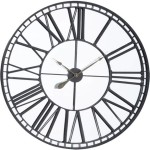How Do You Hang a Heavy Round Mirror Without Wire?
Hanging a heavy round mirror without wire requires careful planning and execution to ensure both safety and aesthetic appeal. The absence of pre-installed wire necessitates alternative hanging methods, often involving specialized hardware designed to support significant weight. This guide outlines the necessary steps and considerations for successfully hanging a heavy round mirror without wire.
Assessment and Preparation
The initial stage involves assessing the mirror's weight and dimensions. This information is crucial for selecting appropriate hanging hardware. Consult the manufacturer's specifications for the mirror's weight. If this isn't available, weigh the mirror using a bathroom scale or similar device. Accurate weight measurement prevents overloading the chosen hardware and ensures a secure installation.
Next, examine the back of the mirror for existing mounting points or hardware. Some mirrors are designed for specific hanging systems. If no pre-existing hardware is present, the mirror's frame material will influence the hardware selection. Solid wood frames can often accommodate screws directly, while more delicate frames might require specialized clips or adhesives.
Choosing the Right Hardware
Several hardware options are suitable for hanging heavy round mirrors without wire. J-hooks or Z-clips, specifically designed for heavy mirrors and pictures, are commonly used. These hooks are installed on the wall and interlock with corresponding brackets or slots attached to the back of the mirror. The weight capacity of the chosen hardware must exceed the mirror's weight. Opting for hardware with a higher weight capacity provides an additional safety margin.
French cleats are another viable option, particularly for very heavy mirrors. A French cleat comprises two interlocking pieces of wood, one attached to the wall and the other to the back of the mirror. The angled design of the cleat creates a strong and secure connection when the two pieces interlock. This system distributes the weight evenly across the wall, making it suitable for heavier items.
Adhesive mounting systems offer an alternative for lighter, heavy-duty mirrors, though they're generally not recommended for extremely heavy pieces. These systems typically involve applying a strong adhesive to the back of the mirror and then pressing it firmly against the wall. Ensure the chosen adhesive is specifically designed for mirrors and can support the mirror's weight. Carefully follow the manufacturer's instructions for application and curing time.
Wall Considerations and Installation
Before installing any hardware, consider the wall type. Drywall requires wall anchors specifically designed for heavy items to prevent the mirror from pulling out of the wall. For concrete or brick walls, heavy-duty screws and appropriate drill bits are necessary. Always locate and avoid any electrical wiring or plumbing before drilling into a wall. A stud finder can help locate wall studs, offering the most secure anchoring points.
Mark the desired mirror position on the wall using a pencil and level. Accurate measurements and precise marking ensure the mirror hangs straight. For J-hooks or Z-clips, measure and mark the placement of the wall hooks, ensuring they align with the corresponding brackets or slots on the back of the mirror. Install the wall hooks securely using appropriate anchors if needed.
For French cleats, attach the wall portion of the cleat first, ensuring it is level. Then, attach the corresponding cleat to the back of the mirror, aligning it with the wall cleat. Carefully hang the mirror by engaging the two cleats. For adhesive mounting systems, carefully apply the adhesive to the designated areas on the back of the mirror according to the manufacturer's instructions. Align the mirror with the marked position on the wall and press firmly for the specified duration.
Safety Precautions
Safety should be paramount throughout the entire process. Wear appropriate safety glasses when drilling and handling hardware. Use a sturdy stepladder or scaffolding for reaching higher wall positions. If the mirror is exceptionally heavy, enlist the assistance of another person to help lift and position the mirror during installation. Never attempt to hang a mirror that exceeds the weight capacity of the chosen hardware.
Post-Installation Check
Once the mirror is hung, gently test its stability. Ensure it is securely attached to the wall and does not wobble or shift. Double-check the alignment and levelness of the mirror. Minor adjustments can be made if necessary, depending on the chosen hardware. Regular inspection of the hanging hardware is recommended to ensure continued stability and prevent any potential issues.

How To Hang A Large Mirror Melanie Lissack Interiors

3 Simple Ways To Hang A Mirror On Wall Without Nails Wikihow

How To Hang A Heavy Mirror Or Picture True Value

How To Hang A Mirror Simple Guide

Foolproof Hang Art Or Mirror With 2 Hole Hangers Porch Daydreamer

Diy Rope Mirror

How To Hang A Heavy Mirror On Drywall Picture Solutions

How To Hang A Heavy Mirror With Pictures Wikihow

How To Hang A Mirror The Best Way On Drywall

How To Hang A Heavy Mirror Taskrabbit Blog








